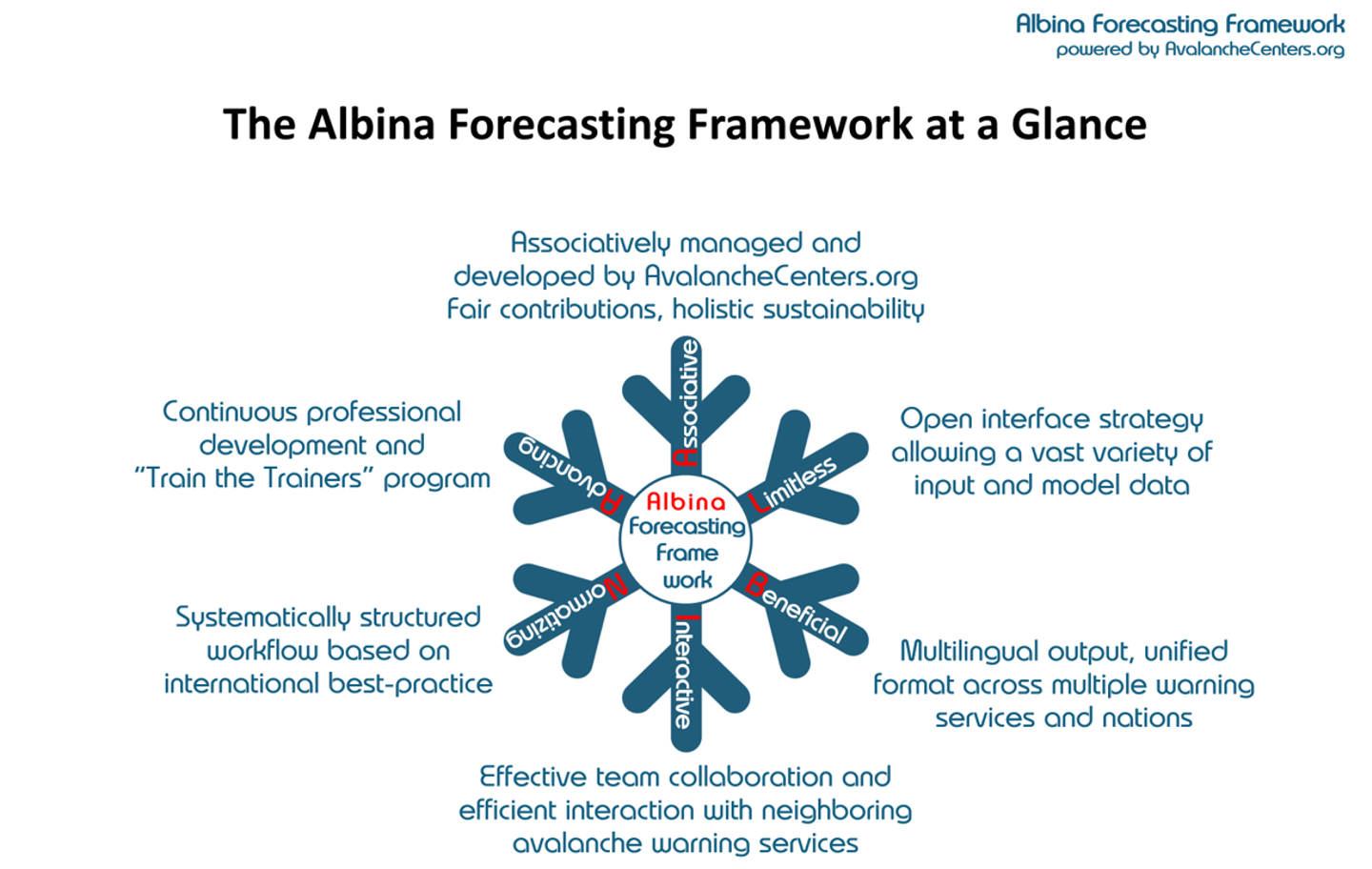ALBINA Open-Source Multi-Lingual Avalanche Forecasting Platform
Modern avalanche forecasting platforms need to master a large variety of tasks, such as aggregating and visualizing snowpack, weather and avalanche observation from various user groups and data sources as well as the output of numerical snowpack and weather models. They furthermore need to allow a systematic and efficient workflow to produce a consistent avalanche forecast, and finally, to disseminate the information in as many languages as possible to different user groups in different formats.

The ALBINA platform has been designed taking the critical collaboration between immediately adjacent forecasting regions of different avalanche warning services in mind. It allows not only to dynamically aggregate and rearrange forecasting regions with similar snow, weather, and avalanche conditions of the same avalanche warning service, but to create cross-border forecasting regions, which typically are then temporarily assigned to the avalanche forecasting service primarily affected by an upcoming weather event. Therefore, ALBINA shows its greatest strengths when multiple avalanche forecasting services use the same platform.
The use of common tools to produce and disseminate the forecasting products structures the analytical and practical processes, and thus plays a key role in increasing the level of common understanding and standardization amongst forecasters, forecasting services and the various users of their products.
In this workshop, you will learn how to use the collaborative ALBINA avalanche forecasting platform based on different use cases. Working in pairs and small groups, you will produce four different avalanche forecasts applying a teamwork approach. Using your smartphone, tablet or notebook computer, you will practically learn how to:
a. Use the ALBINA base functions of creating a forecasting region, copying existing forecasts, assigning avalanche problems, the avalanche danger level, aspects, elevations, creating AM/PM forecasts and using the Catalog of Phrases for the textual part of the forecast.
b. Create clusters of forecasting regions based on similarities in snow, weather, and avalanche conditions.
c. Collaborate in assistant, supervisor and reviewer roles working on the same forecast.
d. Interact in clusters of cross-border forecasting regions assigned to two collaborating avalanche centers.
The associative, collaborative, and open-source ALBINA platform allows everyone to use the code and contribute to the software development under the GPL-3.0 license. For more sustainability and operational efficiency for the participating avalanche forecasting services, ALBINA is as well made available as “Software as a Service” for a moderate development and base service amortization fee.
Please bring a larger smartphone or preferably a notebook computer or tablet.
Supporting documents
https://avalanchecenters.org/AvalancheCentersOrg_Albina_Platform.pptx
Registration
Please send an e-mail to info@AvalancheCenters.org including your full name, organization and contact phone number.
Date
Saturday 28 September 2024
Time
Workshop 1: 08:30 – 11:30
Workshop 2: 12:30 – 15:30
Location
Building: UiT The Arctic University of Norway, Medical Health Faculty Building 1 (google maps)
Room: Auditorium 5 (MH U6.A5C) (mazemap)
Workshop organizers
Christoph Mitterer, Manuel Genswein
Workshop costs
Free